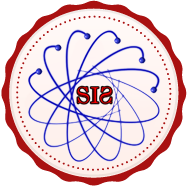WOMEN'S CONTRIBUTION TO ROMANIA'S GDP CREATION
Abstract
Through this approach, we aimed to show which are the role and the place that women obtained, over the time, in the process of states economic development. Thus, the structure of this paper can be reduced to two fundamental objectives. As a first step, we have shown the correlations between diminishing the gender disparities (especially the occupational inequalities) and the economic growth of the states, and in the second part of the paper we showed, pragmatically, considering the so-called conventions and estimation prerequisites, the actual contribution of Romanian women to GDP. Among other things, we highlighted the dynamics of the employment rate at European and national level and we gave the example of some of the most successful women-leaders, who, through their pattern of thinking and conduct, draw the profile of the most powerful women in the world.
Keywords
References
Alexandru-Caragea N. M. (2016). Femeile și Bărbații. Parteneriat de muncă și viață. Editura Institutulului Național de Statistică, București, 1-105.
Frunze, O. (2015). Măsurători ai bunăstării şi prosperării. Economie și Finanțe Publice. Administrarea Publică, No. 4, 75-82.
Scurtu, L. E. & Moroșan Gh. (2017). Customer Relationship Management within the Banks in Romania in the Context of Knowledge Revolution. Strategii Manageriale (Management Strategies), Universitatea Constantin Brâncoveanu, Pitești, Volume X, No IV (38), 448-460.
Teow, Y. J, Utkarshini, S. & Goel, S. (2018). Closing the gender pay gap. PwC Women in Work Index, PricewaterhouseCoopers LLP, 1-45.
Doctoral dissertation:
Scurtu, L. E. (2017). The Tacit Dimension of Knowledge for Accessing and Exercising Executive Levels within Business Organizations (Unpublished doctoral dissertation). Faculty of Economic Sciences and Public Administration, Stefan cel Mare University, Suceava, Romania.
Reports:
CNP (2016). Contribuția femeilor la crearea PIB. Comisia Națională de Prognoză.
EIGE (2016). Egalitatea de gen în procesul de luare a deciziilor financiare. Institutul European pentru Egalitatea de Șanse între Femei și Bărbați.
INS (2012). Forţa de Muncă in România: Ocupare și Şomaj. Ancheta forţei de muncă în gospodării – AMIGO.
INS (2013). Forţa de Muncă in România: Ocupare și Şomaj. Ancheta forţei de muncă în gospodării – AMIGO.
INS (2015). Forţa de Muncă in România: Ocupare și Şomaj. Ancheta forţei de muncă în gospodării – AMIGO.
INS (2016). Forţa de Muncă in România: Ocupare și Şomaj. Ancheta forţei de muncă în gospodării – AMIGO.
INS (2012). România în Cifre. Breviar statistic.
INS (2013). România în Cifre. Breviar statistic.
INS (2015). România în Cifre. Breviar statistic.
INS (2016). România în Cifre. Breviar statistic.
WEF (2006, 2007, 2008, 2009, 2010, 2011, 2012, 2013, 2014, 2015, 2016 & 2017). The Global Gender Gap Report. WEF.
Internet documents/webpages:
Al treilea miliard emergent în următorii zece ani: femeile intră pentru prima dată în economia globală. (2012) retrieved from http://anuaruldeconsultanta.ro/articole/575-ernst-young-al-treilea-miliard-emergent-in-urmatorii-zece-ani-femeile-intra-pentru-prima-data-in-economia-globala.html.
Egalitatea de gen și performanța economică. (2013). retrieved from https://romanialibera.ro/opinii/comentarii/egalitatea-de-gen-si-performanta-economica-316692.
Femei –lider într-o lume a bărbaților. (2011). retrieved from adevarul.ro/life-style/stil-de-viata/femei-lider-intr-o-lume-barbatilor-1_50ad05df7c42d5a6638da840/index.html.

This work is licensed under a Creative Commons Attribution 3.0 License.



















